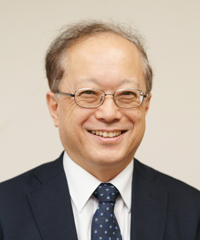Edward Morse, famous for discovering the Ōmori shell mounds, came to Japan in the early Meiji period to study marine life indigenous to Japan. A natural historian, Morse was also interested in Japanese customs and daily life, which retained the sensibility of the Edo period. He also collected everyday artifacts and published books on the daily life of the common people, such as Japan Day by Day.
The book Japan Day by Day also covers children and child raising. It introduces the way that small children are carried on someone's back in Japan, which was unusual at the time in the United States, and described Japan as something like a paradise for infants.
This is probably what he thought as he compared child raising in Japan where infants were affectionately carried on the backs of adults and few crying infants could be seen in public with the situation in the United States where children were still being whipped, sometimes with belts or something similar. Perhaps he concluded there were no crying infants because he didn't actually go inside homes with children, but the fact that Morse felt this way is a tribute to Japan.
So, is Japan today a paradise for infants and children? Undeniably, Japan's infant mortality rate, which is the measure of infant and toddler health, is the lowest in the world, and we can say that children in Japan also enjoy good health. However, considering that child abuse and neglect are increasing year by year, Japan can no longer be considered a paradise for children.
The other day in the train, I noticed a poster for a campaign against child abuse launched by the Tokyo Metropolitan Government. It was a cute crayon drawing of a sad-looking child in a buggy saying "I'm not supposed to cry because it annoys people" while the mother and surrounding adults all answer "It's OK to cry." The poster seems to hint that a child's crying can trigger abuse, and also shows the importance of paying attention to others in one's immediate surroundings from this period of development.
Today, the situation is such that there are people who oppose the opening of a daycare center in the neighborhood because they feel children are noisy. In addition, parents who board a crowded train with a buggy must appear apologetic. This suggests that Japan is no longer a paradise for infants and children.
In an earlier blog posted last summer, I wrote about my mountain-climbing experience in Switzerland. The morning after descending, I was on my way to Zurich to fly to Malaysia to attend a meeting of the Pacific Early Childhood Education Research Association (PECERA). I was surprised by something in the express train. The upper level of the double-decker cars had been turned into carpeted play areas for children. The walls had scenery from fairy tales. The children yelled with joy as they played on the slide in the middle of the car and rolled around on the floor. When a child cries, it is common for a parent to comfort the child and say "Be good." But it is hard for children to remain quiet and still in the tiny space. The Swiss train was an example of tasteful and considerate design for children.
Calling for a society that is friendly to children, Dr. Noboru Kobayashi, Honorary Director of CRN, put forth the concept of Child-Caring Design (CCD). It is a view that supports design from the child's perspective throughout society.
Japan was once called a "paradise for children" by Morse. To recover that reputation, there is still much that can be done through child-caring design.



 Yoichi Sakakihara
Yoichi Sakakihara










